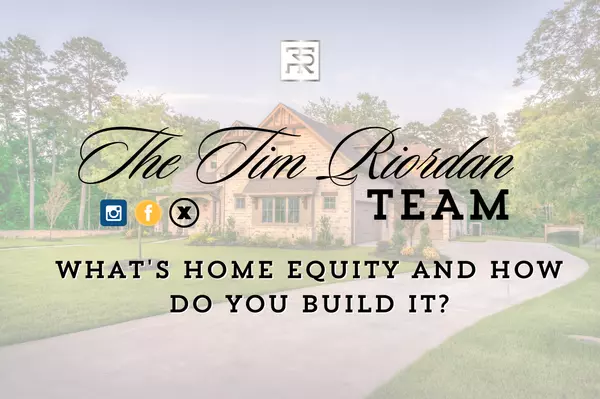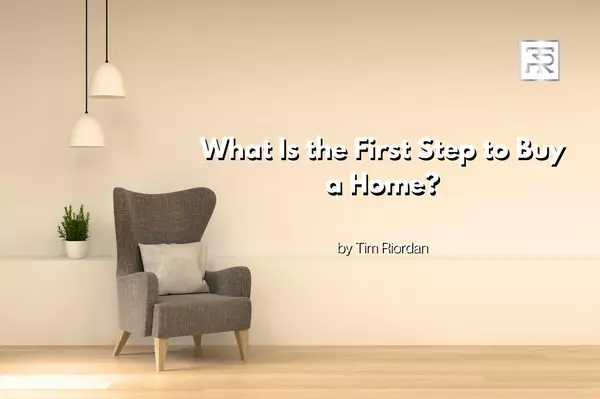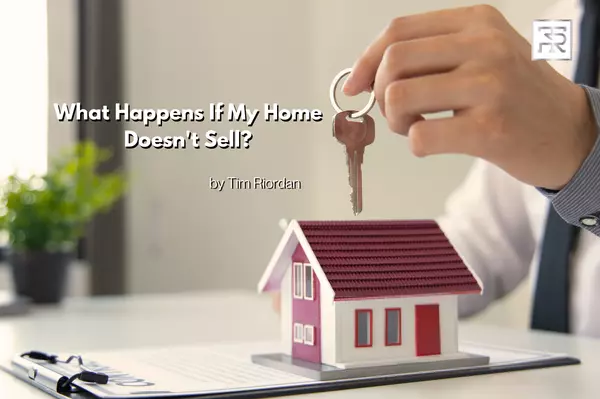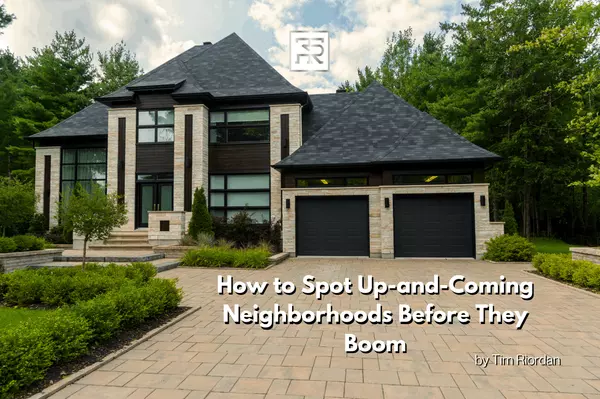
What's Home Equity and How Do You Build It?
Home equity is one of the most powerful financial tools for homeowners. Whether you’re a first-time buyer or have been in your home for years, understanding how home equity works can help you make smart financial decisions. Let’s break down what home equity is, why it matters, and how to build it over time. What Is Home Equity? Home equity is the portion of your home that you truly “own”—it’s the difference between the current market value of your home and what you still owe on your mortgage. For example, if your home is worth $300,000 and you still owe $200,000 on your mortgage, your equity is $100,000. Think of home equity as an asset. Over time, as you pay down your mortgage and (hopefully) your home increases in value, your equity grows. You can tap into that equity later for home improvements and other assets that will add value to your home. How Home Equity Builds There are two main ways to build equity in your home: Paying Down Your Mortgage: Every time you make a mortgage payment, a portion of that payment goes toward paying off the loan’s principal (the amount you borrowed). The more of the principal you pay off, the more equity you build. In the early years of your mortgage, more of your payment goes toward interest, but over time, as your loan balance decreases, more of each payment goes toward the principal, and equity grows even faster. Appreciation (Increasing Property Value): The other way to build equity is through appreciation, or when the value of your home increases over time. Market conditions, improvements to the locale, and renovations can all increase the value of your home. For example, if your home appreciates by $50,000 over five years, that increase adds at least $50,000 to your equity, assuming your mortgage balance stays the same or goes down. How to Build Home Equity Faster While equity naturally builds as you make your monthly payments, there are ways to accelerate the process: 1. Make Extra Mortgage Payments One of the easiest ways to build equity faster is by paying extra toward your mortgage principal. Even an extra payment or two each year can reduce your loan balance more quickly, helping you build equity at a faster pace. Just make sure to specify that any extra payment goes toward the principal, not the interest. 2. Increase Your Property Value with Renovations Upgrading your home can boost its market value, which, in turn, increases your equity. Focus on renovations that offer a high return on investment (ROI), like updating the kitchen or bathrooms, adding energy-efficient features, or improving curb appeal. These improvements not only make your home more enjoyable to live in but also increase its resale value and boost your equity. 3. Avoid Taking on Additional Debt If you want to build home equity quickly, resist the temptation to take out home equity loans or lines of credit unless absolutely necessary. These loans use your equity as collateral, so borrowing against it reduces the amount of equity you have in your home. Instead, focus on paying off your mortgage balance to increase your equity over time. Why Home Equity Matters Building equity in your home is important for several reasons: Financial Security: Home equity represents wealth that you can tap into if needed. It can act as a financial cushion in tough times or help fund large expenses without relying on credit cards or personal loans. Leverage for Loans: Home equity can be used as collateral for a home equity loan or line of credit (HELOC). These can be useful for financing home improvements, paying off high-interest debt, or funding major purchases. Higher Returns When Selling: The more equity you have, the more money you’ll get back when you sell your home. For example, if you sell your home for $350,000 and you still owe $150,000, the remaining $200,000 is yours (minus selling costs, of course). Tapping Into Your Home Equity Once you’ve built up significant equity in your home, there are ways to tap into it: Home Equity Loans: This type of loan lets you borrow a lump sum, using your home’s equity as collateral. It’s a good option if you need to cover a large expense and want predictable payments. Home Equity Line of Credit (HELOC): A HELOC works more like a credit card. You’re given a line of credit that you can draw from as needed, and you only pay interest on what you borrow. Cash-Out Refinancing: This option replaces your existing mortgage with a new one that’s larger than what you owe. You pocket the difference between the new loan and your current mortgage balance, giving you access to your home’s equity. Building home equity takes time, but it’s one of the best ways to grow your wealth as a homeowner. By making smart financial decisions, paying down your mortgage, and investing in your property, you can build equity faster and enjoy the financial benefits it brings whether that’s through selling, borrowing, or simply increasing your net worth.

The Housing Market Is Split. Here’s Why.
The real estate market continues to make national headlines, but why is it that our local experience is often different than what we’re reading about online? If you’ve had any confusion about the real estate market in the last year, you’re not alone. Many people have, and it's because the U.S. is currently in what’s called a bifurcated market, or a split market. What is that? Here's a breakdown. What is a bifurcated market? In the context of real estate, a bifurcated market refers to a situation where the housing market is divided into two distinct segments, each behaving differently in terms of pricing, supply and demand, and activity. While one segment may be experiencing rapid price growth and high demand, the other may be slower, with more stable or even declining prices. How did we get here? Beginning in 2020, markets across the country saw home prices rising faster than they did during the housing bubble of 2005 to 2007. This was due in part to record-low interest rates making mortgages more affordable everywhere but the home price jump wasn’t distributed evenly across the nation. In some markets, such as Raleigh, Las Vegas, and Austin, home values spiked more than 30%, while in others, like some parts of New York and the Midwest, prices rose modestly or didn’t rise at all. The accelerated price growth of some markets over others has to do with the rapid increase in demand. Many people purchased new homes during COVID-19, fulfilling changing needs, locking in an ultra-low interest rate, and most importantly relocating. Many people took advantage of remote work to relocate from an expensive area to a city where they could afford to buy, while others relocated to change jobs or be near family. This led to an exodus from expensive urban centers and caused demand and prices to spike in places previously thought of as affordable. The battle between mortgage rates and inflation In 2022, the economy was moving at such a fast pace that inflation rose to a 40-year high of over 9%. To put downward pressure on inflation and prevent a crash, the Fed started increasing interest rates—which meant that mortgage rates rose. From their low of 2.65% in January of 2021, mortgage rates rose to over 7%. Coupled with high prices, these rates have made homeownership unaffordable for many. It makes sense that high rates and high prices would reduce demand and cause home prices to fall right? Well, kind of. This is where the market starts to split. The question of supply and demand It’s true that when demand drops, prices typically drop as well but you have to factor supply into the equation. While demand is dropping, many markets are seeing a reduction in available inventory as well, because homeowners who have mortgage rates between 2 and 3% don’t want to sell their homes. The split in the national market happens when a region’s pullback in demand is matched by a reduction in supply, allowing prices to stabilize or even continue to grow while in other regions, demand drops and supply remains the same, causing prices to fall. What's next? Most expert predictions expect the housing market to keep correcting itself—but there's no major crash on the horizon. You also shouldn't expect every region to level out in the same way. The current split in the U.S. market is particularly pronounced, but even when it's not, there will always be differences between markets. The average purchase price, the amount of time a home spends on the market, the number of homes available, and other important stats typically vary from region to region and between urban, suburban, and rural markets in the same region. Want the most updated information about your local market? Get in touch with your expert real estate agent.

What Is the First Step to Buy a Home?
Buying a home is one of the most significant investments you will make in your lifetime. It’s an exciting journey filled with opportunities, but it can also be overwhelming if you don’t know where to start. So, what is the first step to buy a home? Let’s break it down. Assess Your Financial Situation Before you dive into the world of real estate, it’s essential to take a close look at your financial health. This initial assessment will set the foundation for your home-buying journey. 1. Evaluate Your Credit Score Your credit score plays a crucial role in determining your mortgage eligibility and the interest rates you’ll be offered. A higher score usually translates to better loan terms. Obtain a copy of your credit report and check for errors or areas that need improvement. If your score is lower than you’d like, consider taking steps to boost it before applying for a mortgage. 2. Determine Your Budget Understanding how much you can afford is vital. A common rule of thumb is that your monthly mortgage payment should not exceed 28% of your gross monthly income. Use online mortgage calculators to get a rough estimate of how much home you can afford based on your income, debts, and down payment. 3. Save for a Down Payment While some loans allow for minimal down payments, saving for a larger down payment can significantly reduce your monthly payments and eliminate private mortgage insurance (PMI). Aim for at least 20% of the home’s purchase price, but don’t be discouraged if you can’t reach that goal. There are various programs available for first-time homebuyers that require less. Be Prepared to Compromise Once you have a clear understanding of your financial situation, the next step is to get pre-approved for a mortgage. This process involves a lender reviewing your financial information to determine how much they are willing to lend you. 1. Gather Necessary Documents To get pre-approved, you’ll need to provide several documents, including: Proof of income (pay stubs, tax returns) Employment verification Bank statements Details of any outstanding debts 2. Shop Around for Lenders Not all lenders offer the same terms and rates, so it’s wise to shop around. Compare interest rates, fees, and customer service reviews. Getting multiple quotes can save you thousands over the life of your loan. Understand Your Needs and Wants As you prepare for your home search, take some time to outline your needs and wants in a property. Consider factors such as: Location: Proximity to work, schools, and amenities Size: Number of bedrooms and bathrooms Style: Single-family home, condo, or townhouse Future Growth: Potential for appreciation in value Start Your Home Search With a pre-approval letter in hand and a clear understanding of your needs, you’re ready to embark on your home search. Utilize online listings, attend open houses, and explore neighborhoods to find the perfect fit. In Conclusion... The first step to buying a home is to assess your financial situation. By evaluating your credit score, determining your budget, and saving for a down payment, you’ll lay a solid foundation for your home-buying journey. Following this, getting pre-approved for a mortgage will empower you to make informed decisions as you navigate the real estate market. Remember, buying a home is not just a transaction; it’s a significant milestone in your life. Take your time, do your research, and enjoy the process! Happy house hunting!
Categories
Recent Posts










